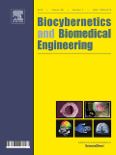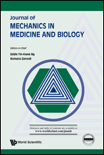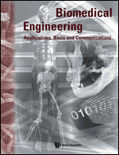
Journal of Medical Signals & Sensors
Scope & Guideline
Exploring the Future of Health Informatics
Introduction
Aims and Scopes
- Medical Signal Processing:
Research on techniques and algorithms for processing medical signals, including EEG, ECG, and imaging data, to enhance diagnostic accuracy and patient monitoring. - Biomedical Imaging:
Studies focusing on innovative imaging techniques such as MRI, CT, and ultrasound, emphasizing the enhancement, analysis, and interpretation of medical images. - Wearable Health Technology:
Development and analysis of wearable devices for continuous health monitoring, including applications in chronic disease management and real-time health assessment. - Artificial Intelligence in Healthcare:
Integration of AI and machine learning techniques to improve clinical decision-making, automate diagnosis, and enhance the analysis of medical data. - Biosensors and Bioinformatics:
Research on the development of biosensors for various applications in diagnostics and therapy, alongside bioinformatics approaches to analyze biological data. - Radiation Therapy Techniques:
Exploration of advancements in radiation therapy, including dosimetric studies and the application of simulation models for treatment optimization.
Trending and Emerging
- Artificial Intelligence and Machine Learning:
Recent publications increasingly highlight the application of AI and machine learning in medical diagnostics and treatment planning, showcasing their potential to revolutionize healthcare delivery. - Telehealth and Remote Monitoring:
The rise of telehealth solutions, particularly in light of the COVID-19 pandemic, has led to an increase in research focused on remote patient monitoring technologies and systems. - Advanced Biosensing Technologies:
Emerging biosensors leveraging nanotechnology and microfluidics are gaining traction, reflecting a growing interest in rapid and accurate diagnostic tools. - Radiomics and Image Biomarkers:
Research on radiomics, which extracts large amounts of features from medical images, is on the rise, indicating a trend towards personalized medicine and predictive analytics. - Integration of IoT in Healthcare:
The integration of Internet of Things (IoT) technologies in healthcare applications is becoming more prevalent, emphasizing the need for smart health monitoring systems that enhance patient care.
Declining or Waning
- Traditional Imaging Techniques:
There has been a noticeable decrease in studies focused solely on conventional imaging methods without integration of advanced processing or AI, suggesting a shift towards more innovative approaches. - Basic Signal Processing Techniques:
Research centered on fundamental signal processing methods is declining as more complex and integrated approaches emerge, particularly those involving machine learning and deep learning. - Pharmacological Studies:
Research papers focusing solely on pharmacological aspects without a technological or signal analysis component have become less frequent, indicating a move towards more interdisciplinary studies. - Non-Digital Health Monitoring Systems:
The exploration of analog or non-digital health monitoring systems has waned, as the field pivots towards digital and connected health technologies.
Similar Journals

Signal Image and Video Processing
Exploring Breakthroughs in Signal AnalysisSignal Image and Video Processing, published by Springer London Ltd, is a cutting-edge academic journal dedicated to the fields of electrical and electronic engineering and signal processing. With an ISSN of 1863-1703 and an E-ISSN of 1863-1711, this journal plays a pivotal role in disseminating innovative research findings from 2007 to 2024, boasting a commendable Q2 ranking in its respective categories. Located in the United Kingdom, the journal attracts a diverse readership of researchers, professionals, and students eager to explore advancements in signal processing technologies and their applications in imaging and video analysis. Although it does not offer open access, its rigorous peer-review process ensures the publication of high-quality, impactful research, evident by its respectable rankings within Scopus in both electrical engineering and computer science domains. The journal serves as vital resource for those aiming to stay at the forefront of technological developments and research in image and video processing.

Biomedical Engineering Letters
Empowering researchers with groundbreaking insights.Biomedical Engineering Letters, published by SpringerNature, is a prominent journal in the field of Biomedical Engineering. With a robust ISSN of 2093-9868 and E-ISSN of 2093-985X, this esteemed journal has established itself as a vital resource for researchers and professionals seeking to advance their knowledge and share groundbreaking findings. Recognized for its quality, Biomedical Engineering Letters holds a distinguished ranking in Scopus, positioned at #94/303 (69th percentile) in the Biomedical Engineering category. The journal covers a diverse scope within biomedical engineering, providing an important platform for innovative research from 2011 to 2024 and facilitating the exchange of ideas among scholars. Although it operates under a subscription model, the journal's commitment to enhancing the field makes it an indispensable reference for those engaged in cutting-edge biomedical research in Germany and globally.

Biocybernetics and Biomedical Engineering
Exploring the Synergy of Cybernetics and MedicineBiocybernetics and Biomedical Engineering, published by ELSEVIER in the Netherlands, is a prestigious journal that stands at the forefront of the intersecting fields of biomedical engineering and artificial intelligence. With an impressive Impact Factor that places it in the Q1 category for Biomedical Engineering, this journal not only ranks 17th out of 303 in Scopus but also boasts a remarkable percentile ranking of 94th, highlighting its influence and relevance within the scientific community. Since its inception in 2008, Biocybernetics and Biomedical Engineering has aimed to publish cutting-edge research that integrates principles of cybernetics with technological advancements in health care, thereby fostering innovations that improve patient outcomes. Dedicated to advancing knowledge in biomedical technology, the journal serves as a vital resource for researchers, professionals, and students seeking to explore the latest developments and methodologies in the field.

Network Modeling and Analysis in Health Informatics and Bioinformatics
Connecting research to enhance patient care and medical insights.Network Modeling and Analysis in Health Informatics and Bioinformatics, published by SPRINGER WIEN, stands as a vital resource in the interdisciplinary domains of health informatics and bioinformatics. With an ISSN of 2192-6662 and E-ISSN of 2192-6670, this journal aims to facilitate the dissemination of innovative research that intersects network modeling, data analysis, and health applications. The journal competes at a Q3 quartile level across multiple categories including Biomedical Engineering and Health Informatics, showcasing its growing influence within the academic community. As of 2023, it holds impressive Scopus rankings, including a 20th position in Urology, illustrating its significance in the field. Although not an open access publication, the journal is dedicated to providing cutting-edge insights from 2012 to 2024 and is poised to attract researchers, professionals, and students striving to push the boundaries of knowledge in health informatics and bioinformatics. This journal is not just a platform for sharing scholarly articles; it is a catalyst for advancing methodologies that enhance patient care and medical research.

Journal of Mechanics in Medicine and Biology
Unveiling the Mechanics Behind Life's ComplexitiesThe Journal of Mechanics in Medicine and Biology, published by World Scientific Publishing Co Pte Ltd, serves as a critical platform for interdisciplinary research at the intersection of engineering and biomedical sciences. With an ISSN of 0219-5194 and E-ISSN of 1793-6810, this esteemed journal has been dedicated to exploring the mechanical principles that govern biological systems since its inception in 2008. Based in Singapore, it addresses a diverse range of topics, from biomaterials to biomechanics, contributing valuable insights into the field’s evolving landscape. Although currently positioned in Q4 of Biomedical Engineering according to the 2023 category quartiles, it is poised for growth and increased visibility within the scientific community, fostering innovation and collaboration among researchers, professionals, and students alike. The journal emphasizes the importance of cutting-edge research and its practical implications, making it a vital resource for those striving to enhance the future of medical technologies and biological understanding.

BIOMEDICAL ENGINEERING-APPLICATIONS BASIS COMMUNICATIONS
Connecting the dots between engineering and healthcare.BIOMEDICAL ENGINEERING-APPLICATIONS BASIS COMMUNICATIONS is a prominent journal dedicated to the dynamic field of biomedical engineering, published by WORLD SCIENTIFIC PUBL CO PTE LTD. Since its inception in 1992, the journal has provided a platform for the dissemination of high-quality research and innovative applications within the biomedical engineering domain. Despite its current Q4 ranking in multiple categories such as Bioengineering and Biomedical Engineering, the journal serves as an essential resource for researchers and professionals seeking to explore the latest developments and practical applications in this interdisciplinary field. The journal is based in Singapore, reflecting the region's growing influence in scientific research and technology. Although it does not offer open access, it continues to attract submissions that enrich the scientific dialogue within its community. With a commitment to fostering knowledge and research collaboration, this journal remains a vital contributor to the ongoing advancements in biomedical technology and engineering.

Biomedical Engineering-Biomedizinische Technik
Advancing Biomedical Innovation for a Healthier TomorrowBiomedical Engineering-Biomedizinische Technik, published by WALTER DE GRUYTER GMBH, serves as a pivotal platform for advancing knowledge in the field of biomedical engineering and medicine since its inception in 1956. With an ISSN of 0013-5585 and an E-ISSN of 1862-278X, this peer-reviewed journal offers accessible insights into innovative research and technological advancements that are reshaping healthcare practices and biomedical applications. Although rated in the Q3 category for both Biomedical Engineering and Miscellaneous Medicine in 2023, the journal's impact factor and growing reputation demonstrate its vital role in fostering academic dialogue and collaboration. The journal is based in Germany, while its scope encompasses a diverse range of topics, thus bridging the gap between engineering and medical disciplines. Researchers, professionals, and students alike are encouraged to engage with the content that not only highlights contemporary challenges but also presents groundbreaking solutions in biomedical technology.

Health Information Science and Systems
Enhancing health outcomes through informed research.Health Information Science and Systems, published by Springer, stands as a pivotal academic journal advancing the field of health informatics and information science. With its ISSN 2047-2501 and E-ISSN 2047-2501, this open-access journal aims to disseminate cutting-edge research and innovations that bridge the gap between healthcare and information technology. Since its inception in 2013, it has committed to enhancing understanding of health information systems, electronic health records, and data management strategies, impacting both clinical practice and healthcare policy. Researchers, professionals, and students engaged in health informatics will find indispensable insights and studies that pave the way toward improving health outcomes and system efficiencies. The journal provides a global platform for the dissemination of critical analyses and empirical studies up to the year 2024, making it an essential resource for those seeking to stay at the forefront of this rapidly evolving domain.

Nature Biomedical Engineering
Championing Groundbreaking Studies in Biomedical ApplicationsNature Biomedical Engineering is a premier journal published by NATURE PORTFOLIO, focusing on innovative research at the intersection of engineering and biomedical sciences. With an ISSN of 2157-846X, this journal aims to disseminate groundbreaking studies that advance the field of bioengineering, biotechnology, and medical applications. Since its inception in 2017, it has rapidly earned a reputation for excellence, consistently achieving a Q1 ranking in various categories including Bioengineering and Biomedical Engineering, and receiving acclaim in prestigious Scopus rankings, boasting top positions in the fields of Computer Science Applications and Medicine. The journal operates under a rigorous peer-review process, ensuring that all published articles contribute substantially to the existing body of knowledge. Furthermore, it facilitates a broad accessibility model for researchers and practitioners, bolstering collaboration and innovation within the global scientific community. Nature Biomedical Engineering is not just a publication; it serves as a vital platform for thought leadership in the transformative field of biomedical engineering.

Biomedical Engineering Online
Unlocking the future of healthcare through open-access knowledge.Biomedical Engineering Online, published by BMC, is an esteemed open-access journal in the United Kingdom that has been advancing the field of biomedical engineering since its inception in 2002. With a commitment to disseminating high-quality research, the journal encompasses a broad scope, including innovative studies in biomaterials, imaging technologies, and medical applications. Recognized within the Q2 quartile for various categories such as Biomaterials and Biomedical Engineering, it ranks favorably among its peers: Rank #58 out of 333 in Radiology, and Rank #15 out of 63 in Radiological and Ultrasound Technology in the Scopus database. These rankings, coupled with an open-access model, ensure that critical advancements in medical technology are accessible to researchers, health professionals, and students globally. As it continues through its converged years from 2002 to 2024, Biomedical Engineering Online remains an invaluable resource for anyone involved in the cutting-edge intersection of engineering and medicine.